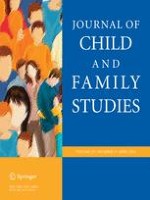01-04-2014 | Original Paper
Searching for Danger: On the Link Between Worry and Threat-Related Confirmation Bias in Children
Gepubliceerd in: Journal of Child and Family Studies | Uitgave 3/2014
Log in om toegang te krijgenAbstract
The present study examined the relationship between worry and threat-related confirmation bias in children. Forty non-clinical children aged 10–12 years completed the child version of the Penn State Worry Questionnaire as a cognitive index of anxiety proneness, and then were administered a modified version of the Wason Selection Task to assess verifying and falsifying reasoning strategies in response to conditional danger rules. Results demonstrated that children with high levels of worry displayed a stronger tendency towards verification and a weaker inclination towards falsification than children with low levels of worry. This finding indicates that confirmation bias occurs in individuals with a general vulnerability to anxiety, and fits well with current theoretical models in which cognitive distortions are viewed as risk factors predisposing to the development of fear and anxiety problems.
